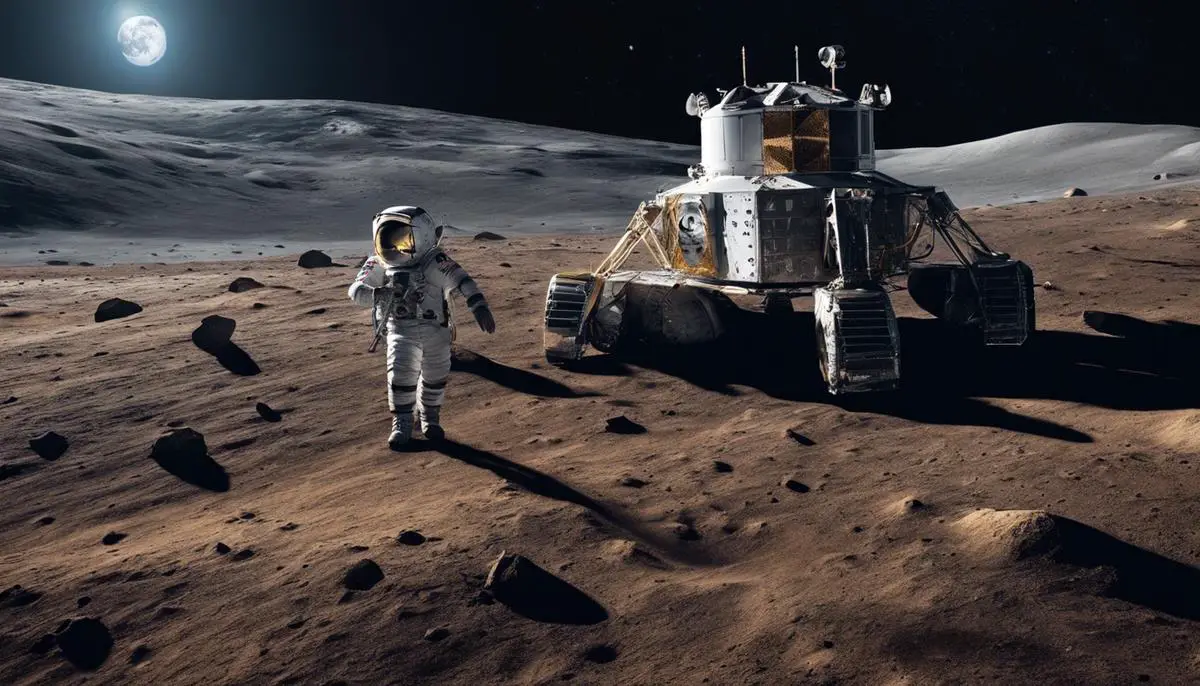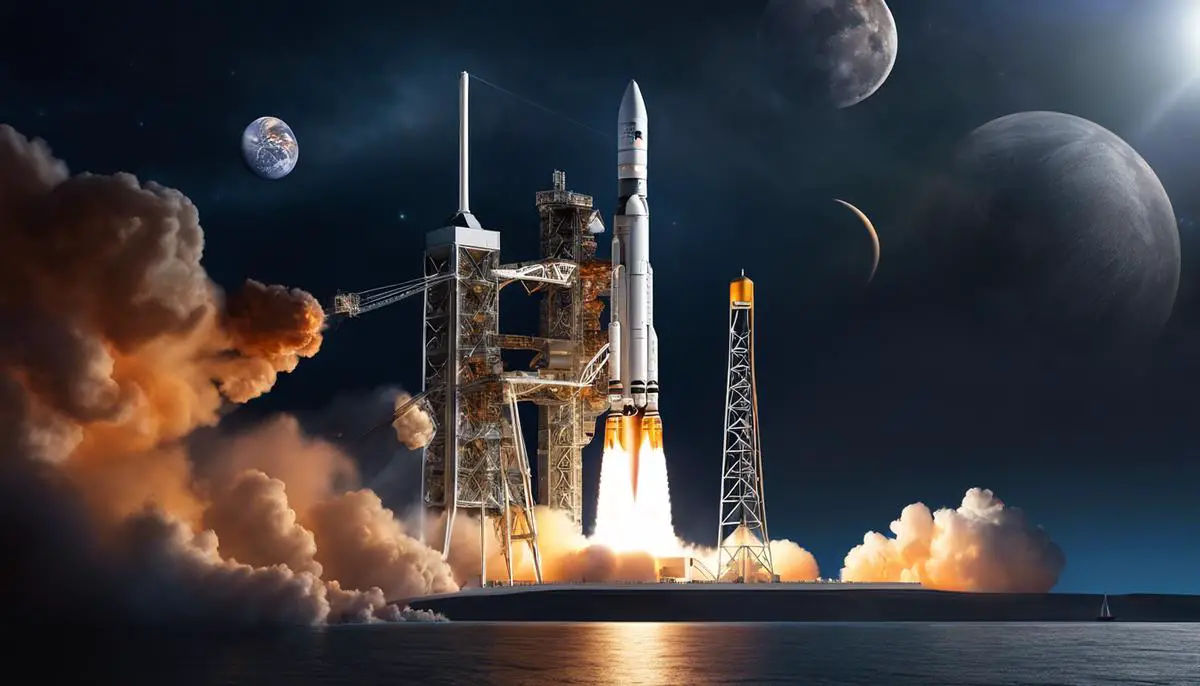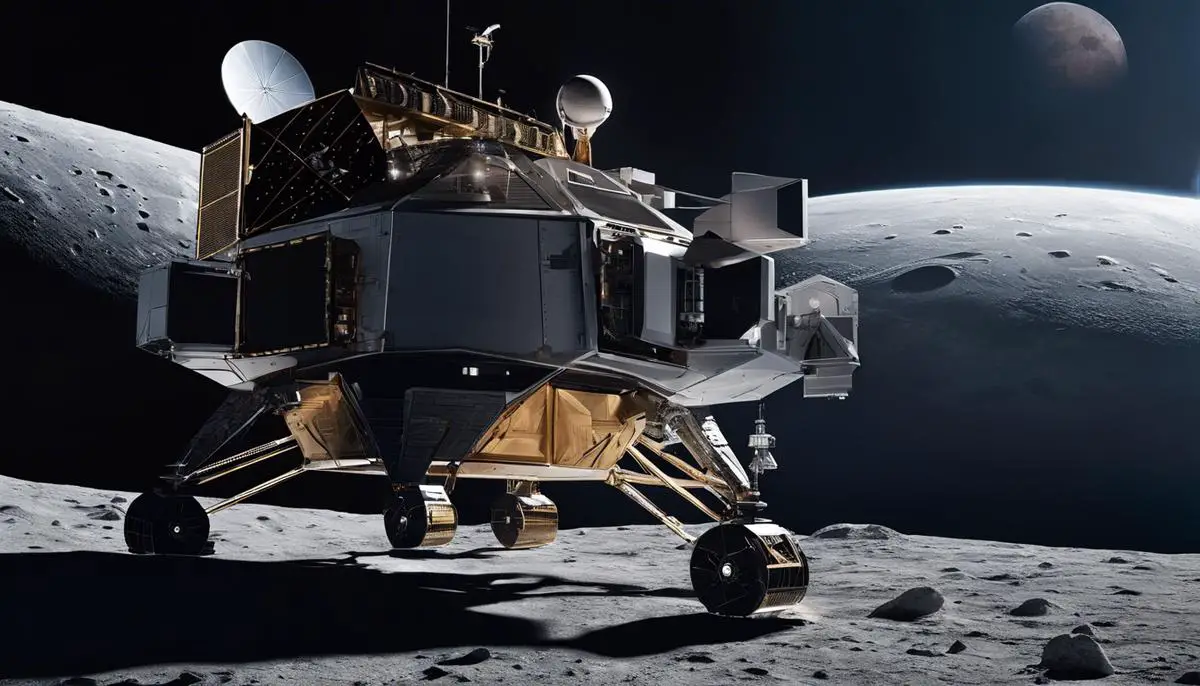The ambitious Artemis Program by NASA, aimed at landing humans on the Moon once more, is a testament to the incredible strides in space exploration technology we have made. As citizens of the world, understanding the intricate technology and cutting-edge innovations used in this grand enterprise, can enhance our appreciation of this remarkable achievement in human ingenuity. Our exploration encompasses the critical aspects of spacecraft and Lunar Module Development, the impressive Space Launch System (SLS) technology, pioneering human and robotic exploration techniques, and advancements in Space Suit Technology.
Contents
Spacecraft and Lunar Module Development
Unprecedented advancements in technology can spur the capability of mankind to unlock the mysteries of outer space, inquisitively probing beyond the known limits. The National Aeronautics and Space Administration (NASA), a beacon of human endeavor in space exploration, has embarked upon an ambitious project, the Artemis Program. Within the evolutionary fold of this initiative, revolutionary technologies are being deployed, setting the stage to return humans to the moon and subsequently, reach the farthest points of our solar system, including Mars.
One of the most prominent assets within the Artemis Program is the Orion spacecraft, a new and extraordinarily advanced vehicle that boasts state-of-the-art technology. Designed to carry astronauts further into space than ever before, Orion possesses a first-of-its kind heat shield, built with an innovative material known as Avcoat. This facilitates Orion’s re-entry into Earth’s atmosphere, lowering temperatures inside the spacecraft to levels compatible with human life, despite exterior temperatures reaching up to a bracing 5,000 degrees Fahrenheit.
Moreover, NASA is leveraging the technological prowess of the Space Launch System (SLS), the most powerful rocket ever created by mankind. The proficiency of SLS lies in its ability to carry significantly higher payloads into space, far beyond what previous spacecrafts could manage. Utilizing its amazing capabilities, the SLS will propel Orion, along with the crew aboard, to the Moon and eventually Mars.
Another substantial element of the Artemis Program is the deployment of the Gateway. This small spaceship will orbit the Moon, providing a transitional hub for astronauts; an area for living, working, and planning lunar surface missions. The Gateway will be powered by a Solar Electric Propulsion system (SEP) which uses sun energy converted into electricity to propel it. This advances our capacity for sustainable, long-term space missions.
Furthermore, the Lunar Surface Innovation Initiative (LSII) is deploying revolutionary technology to sustain humans on the lunar surface for extended periods. This incorporates the development of advancements in areas such as autonomous robotics, dust mitigation, and trash to gas conversion systems to efficiently deal with waste in space.
Keen inspiration is derived from the evolutionary prowess of the Artemis Program. NASA’s thrilling narrative includes the finest engineers and scientists to ever grace the space exploration field, utilizing their expertise to navigate the harsh and vast expanse of space. As these technologies continue to thrive and refine, the dreams woven decades ago are brought closer to reality – the dream of a manned mission to Mars, and the perpetual human presence on other celestial fronts.

Space Launch System (SLS) Technology
A critical component of NASA’s Artemis program lies in the development and incorporation of unique technology and design predicated upon SLS or Space Launch System. The SLS, a herculean super heavy-lift expendable launch vehicle, epitomizes humanity’s collective aspiration of final frontier exploration, harnessing both the power of modern science and the audacity of our greatest imaginations.
SLS’s unique design interjects a measure of robustness into the Artemis Program expected to propel humanity into becoming an interplanetary species. For instance, the ingenious decision to leverage upon the tried and tested components from the Space Shuttle Program, such as four RS-25 engines and two Solid Rocket Boosters, has engendered a remarkable blend of familiarity and innovation. This balanced approach advances knowledge while mitigating risks, thereby reassuring our collective conscious of safe space exploration.
Undeniably, the technology deployed within the SLS involves fascinating advancements. The SLS Block 1 configuration employs an interim cryogenic propulsion stage, laced with one RL-10 engine, to provide the needed thrust that veers Orion towards its destination. The Block 2 configuration, however, kicks it up a notch as it incorporates the exploration upper stage (EUS) utilizing four RL-10 engines for optimal thrust and exceptional precision. From the perspective of a scientist, this is a testament to human resilience, innovation, and quest for knowledge.
In our desperate flirtations with the great unknown, we encounter many challenges, posing vexing questions that persistently seek answers. One of our collective concerns involves the extreme environments posed by space such as the intense radiation and microgravity conditions. In response, NASA has devised space habitats with enhanced radiation shielding and advanced life support systems. These intricately designed living quarters aim to preserve human life against the harsh realities of outer space, reminding us that even in the face of insurmountable challenges, human innovation perseveres.
With a preparation for future crewed missions to Mars in sight, NASA also plans to incorporate a deep space transport vehicle. This vehicle, a particularly intriguing project, is conceived to be refurbished and reused thus enabling cost efficacy and resource efficiency, giving life to the concept of sustainable space exploration.
Last but not least, the Artemis program and its SLS are also designed for compatibility with commercial logistic services, crucial for a regular supply of equipment, supplies, and science experiments to the lunar Gateway. This aspect of the Artemis program, fosters an era of private public partnership paving the path for commercial opportunities in space and encouraging the participation of private enterprises in the domain of deep space exploration.
Let it be said then, it is through the unique technological features and innovative design elements of the SLS, that the Artemis program prepares to embrace the lofty goals of its mission. We, the human species, are on the verge of turning a new leaf and entering a new epoch in space exploration. Consequently, the quenching flames of our collective curiosity guide our insatiable quest for knowledge about the universe and our immanent place within it.

Human and Robotic Exploration Type
Forays into the cosmos, such as the Artemis Program, span a confluence of disciplines and industries, and employ advanced technology in unique and innovative ways. Many of these components, crucial to the success of the mission, have not been previously articulated and so bear further examination.
The Artemis Program is leveraging an array of cutting-edge technologies that extend beyond the realms of mere space vehicles and propulsion systems. One of the remarkable examples is the Human Landing System (HLS). HLS, a first-of-its-kind initiative, is tasked with the ambitious goal of safely bringing astronauts from lunar orbit to the moon’s surface and back. The HLS integrates several sophisticated components including descent, transfer, and ascent elements, each of these are optimized for the specified operations, further enhancing safety and efficiency.
In order to effectively communicate with both the Orion spacecraft and the Gateway, NASA has implemented an evolved version of the Space Network. This sophisticated communication system employs Tracking and Data Relay Satellites (TDRS), strategically placed in geosynchronous orbit, to provide continuous two-way contact with these pivotal elements of the Artemis program. This ensures that important data and status reports can be relayed back to mission control, enabling quick responses to any potential issues.
Another novel aspect is the application of technologies normally associated with the field of medicine. Space suits, for instance, are armed with Bio-monitoring systems which track the astronauts’ vitals in real time. They measure heart rate, oxygen levels, temperature and more, ensuring the astronauts’ wellbeing as they brave the rigors of space.
Sustainability is likewise a priority in the Artemis Program. NASA is propelling the technology of in-situ resource utilization (ISRU) forward. Deploying tools to extract and utilize resources found on the lunar surface, with particular emphasis on water, is part of this initiative. This aspect of the mission will be instrumental in future long-duration stays on the moon and other planets.
In addition to human exploration, robotics play a crucial role in the Artemis Program. To facilitate optimal exploration while minimizing risks to human astronauts, a suite of robotic lunar rovers are under development. These include the Volatiles Investigating Polar Exploration Rover (VIPER) and the Commercial Lunar Payload Services (CLPS) rovers. VIPER will search the moon’s south pole for water and other resources, while CLPS rovers will carry numerous scientific investigations and technology demonstrations to the lunar surface.
Thus, the Artemis Program stands at the frontier of space exploration technology, encompassing a wide array of disciplines and constantly opening up new avenues of research. The goal is not merely to reach the moon, but to establish a sustainable human and robotic presence there, paving the way for future missions to Mars and beyond. This endeavor truly embodies the adage, “the sky is not the limit”. Therein lies the very essence of the Artemis Program: enlarging the borders of human knowledge and setting the stage for the future of space exploration.

Space Suit Technology
Building upon the multifaceted project that NASA’s Artemis Program is, the space suit technology designed specifically for this mission is another vital consideration.
Under the Artemis program, the new space suit, known as the Exploration Extravehicular Mobility Unit (xEMU), incorporates significant improvements from previous space suits developed for astronaut safety, capability, and convenience during extra-vehicular activities on the lunar terrain.
The xEMU’s lower body contains versatile joints, allowing astronauts to stoop, walk, and reach the lunar surface. Significantly different from previous design, the gloves are engineered to provide the dexterity necessary for intricate operations. Moreover, the helmet is now an integral part of the suit, shielding astronauts’ eyes from the harsh sunlight with a protective visor. This suit, a testament of collective wisdom acquired over several astronaut missions and collaborations, includes a Portable Life Support System (PLSS) that serves as the ‘backpack,’, filtering the astronaut’s air, keeping the temperature regulated, and sustaining communications.
While these advancements are remarkable, it’s worth recognizing the challenges that permeated this feat of engineering. The key issue NASA engineers faced was how to create an adaptable, one-size-fits-all space suit that both protects astronauts and dexterously aids them. The solution was derived through multiple prototypes, meticulous testing, and integrating feedback from astronauts, thus achieving a suit that provides extensive mobility, advanced life-support technologies, enhanced gloves and helmet visibility, and overall reliability in performance.
Another notable challenge was designing the PLSS that needed to be versatile, robust, and capable of supporting various mission lengths on the lunar surface. Offering a solution, the Advanced PLSS 2.0 was engineered, an innovative life support system equipped with miniaturized components, efficient thermal regulation, and reliable safety features.
Innovation also extends to space suit textile technology. The outer layers of the xEMU must guard against micrometeoroids and radiation while also maintaining insulation against the extreme temperature changes in space. The usage of state-of-the-art materials accomplished this task, ensuring durability and robustness, while keeping the weight to a minimum.
As the Artemis program unfolds, the ingenuity in space suit technology will be amplified, providing astronauts with unparalleled equipment for their monumental missions. An intriguing future awaits, promising more thrilling revelations and ground-breaking achievements in space exploration. The blend of ambition, expertise, and technological advancements, as manifested in the xEMU, establishes a solid foundation for the scientific endeavor: to conquer the moon, Mars, and beyond.

Embedded within the framework of the Artemis Program, the advancements in spacecraft development, ground-breaking SLS technology, innovative human and robotic exploration, and leading-edge space suit improvements, tell a story of progress, dedication, and the human thirst for expanding our cosmic boundaries. As we gaze towards the horizon, awaiting the new developments and discoveries the Artemis Program will bring, we realize the extent to which our understanding and technology have come and the endless potential the future of space exploration holds. This journey through the Artemis Program serves as an homage to human innovation and a hopeful vision of our place in the cosmos.
